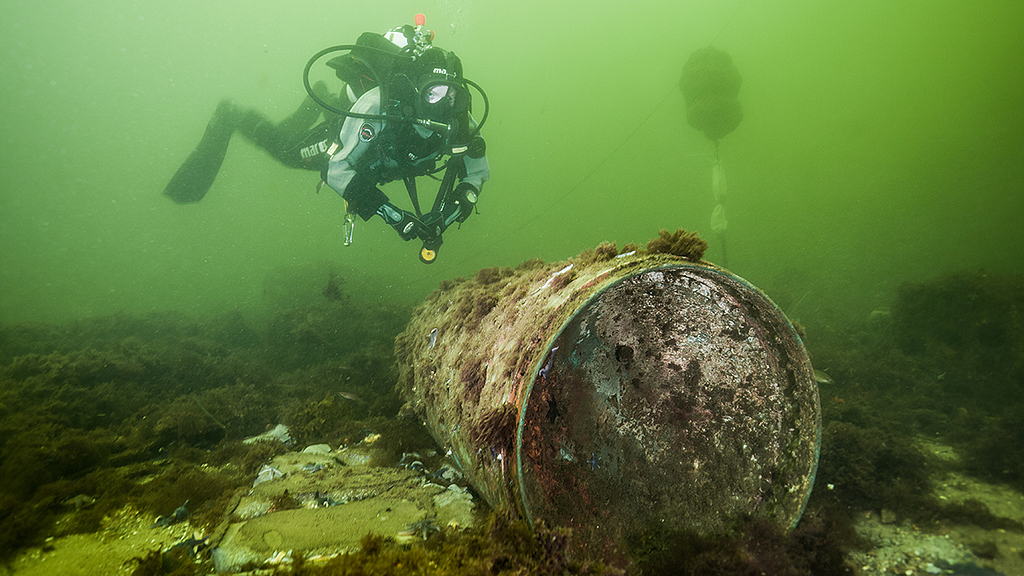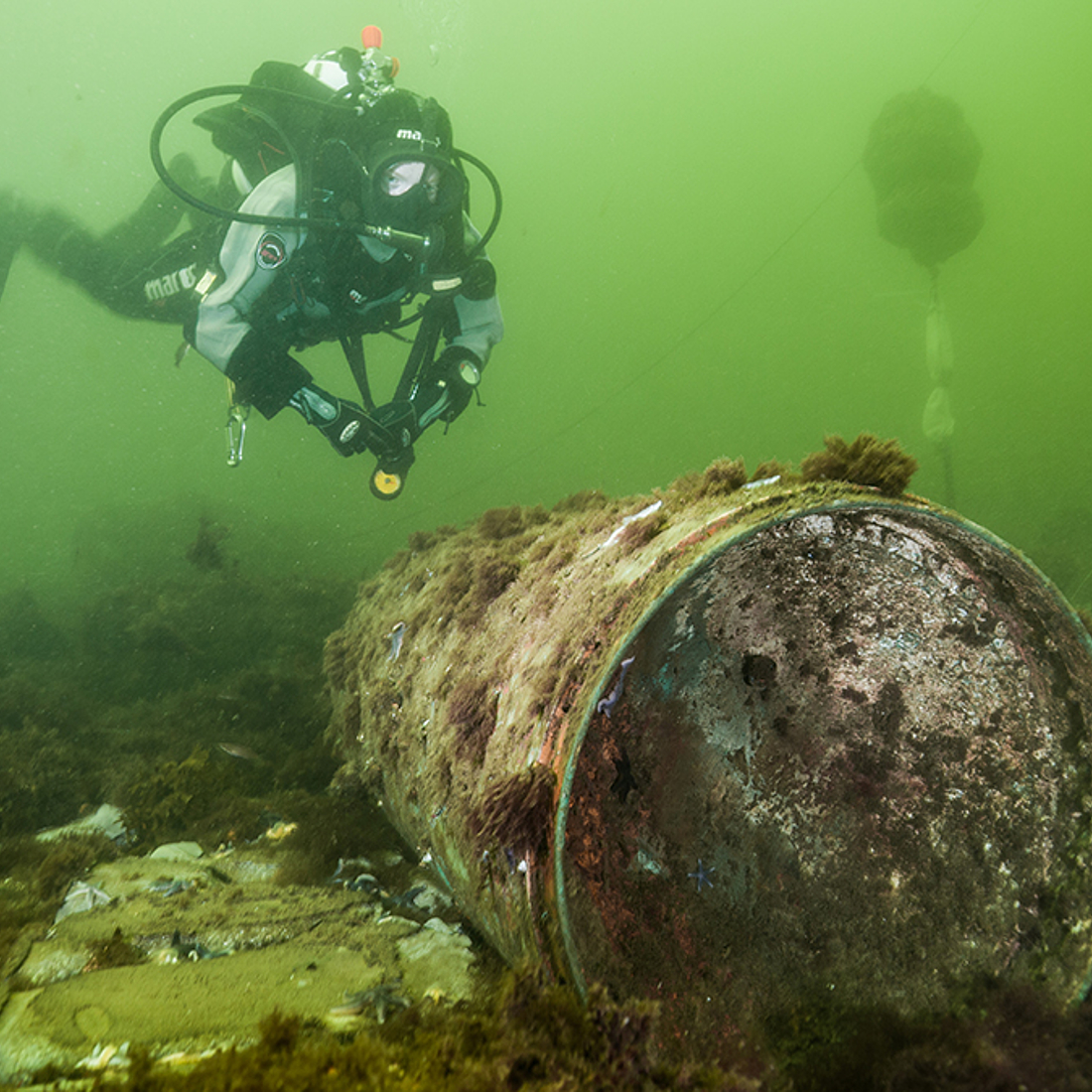The hazards of war remnants

Scientific diver above ammunition in the Baltic Sea’s Kolberger Heide munition dump site. © Jana Ulrich, GEOMAR
Legacies from warfare are hazardous in many ways: Munitions wash up on shores or become entangled in fishing nets. Wreck sites can also endanger shipping, fishing or offshore construction projects.

Danish Navy divers investigating the wreck of submarine SM UC 30 in the North Sea © Danish Navy and Aarhus University
There are also invisible hazards: The metal casings of munitions gradually corrode, allowing the hazardous substances within to leak into the marine environment. Chief among these is trinitrotoluene (TNT), the most common form of explosive – and a proven carcinogen.

The European lobster (Homarus gammarus) on the wreck of the SM UC 30. © Danish Navy and Aarhus University
Wreck sites are home to creatures too. They take up the dissolved explosive with the water or they ingest these substances by eating contaminated organisms, allowing toxic chemicals to enter the food chain This shows how toxic remnants of war could eventually end up on our plate.

Diving in the North Sea is complicated and dangerous, but working with partners helps to ensure our explorations are a success. © Vlaams Instituut voor de Zee
Researchers in the project North Sea Wrecks assess the condition of the wreck and its cargo. Such collaboration helps participants in the North Sea Wrecks project (and in partner projects) to evaluate risks.
Partner
-

